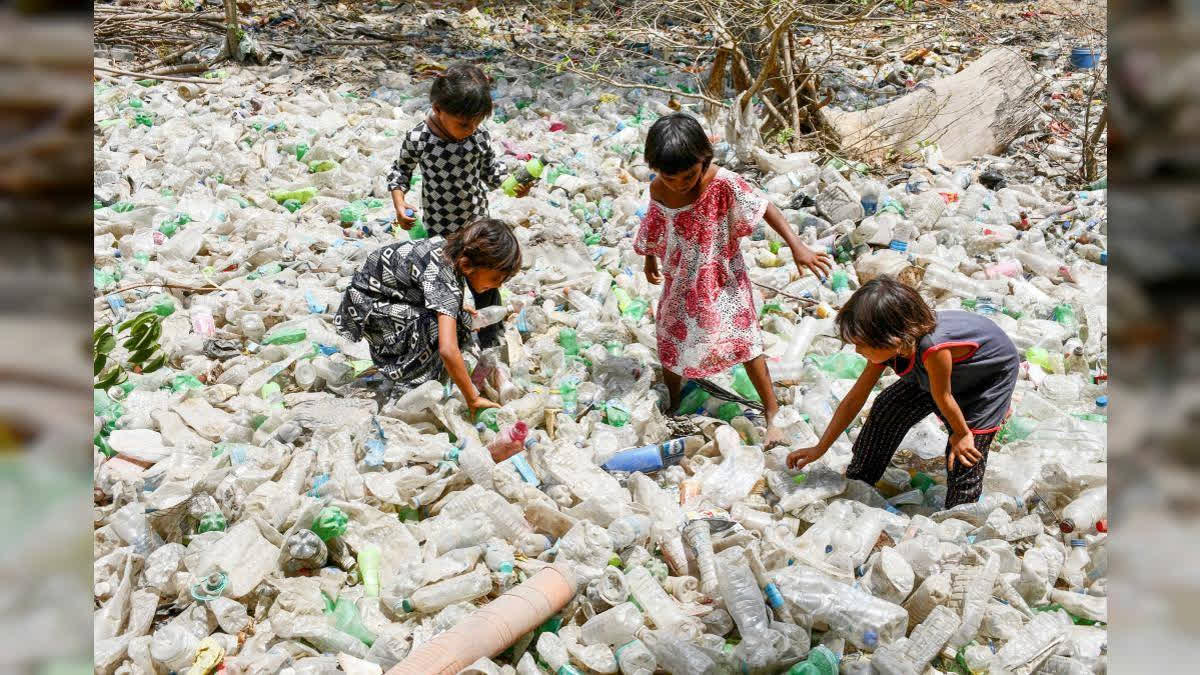Indian cities rank among the largest producers of waste globally, generating approximately 62 million tonnes annually. Around 43 million tonnes (70%) are collected, roughly 12 million are treated, and 31 million tonnes are disposed of in landfill sites.
Estimates from the 2020-21 Central Pollution Control Board Annual Report indicate that India generates about 160,000 metric tonnes of solid waste each day, of which approximately 150,000 metric tonnes are collected daily. Of this total, roughly 50% of the waste undergoes treatment processes, while 18% is discarded in landfills. India has reached a stage where it must meet the goal of sustainable strategies to divert waste from ever-expanding landfills.
For instance, the growing accumulation of rubbish in Ghaziabad, near Delhi, is projected to reach the height of the Qutb Minar, illustrating the lack of efficiency of waste management and none of the Indian cities have mastered the science of garbage management.
It is anticipated that urban India will produce 107.01 million tonnes per year by 2031 and 160.96 million by 2041, indicating an approximately fivefold increase in waste generation over four decades. On January 17, 2025, the Supreme Court expressed its strong disapproval of the Municipal Corporation of Delhi (MCD) while hearing a case related to implementing the Solid Waste Management Rules, 2016, in Delhi, noting that 3,000 tonnes of solid waste remained untreated in the national capital daily.
The apex court had criticised the MCD over the "sorry state of affairs". It is reported that the national capital generated over 11,000 tonnes of solid waste daily. In contrast, the daily capacity of processing plants was only 8,073 tonnes, leaving more than 3,000 tonnes of solid waste untreated each day.

Another challenge is biomedical waste management (BMW), which is different from conventional rubbish. While India claims to process 96 per cent of its biomedical waste (BMW), it remains unclear how both Union and State governments address non-compliance.
A primary obstacle faced mainly by government hospitals in implementing the Biomedical Waste Rules is the lack of funding. In the late 1990s, following the introduction of the first BMW rule, India witnessed a surge in the installation of incinerators. These operations eliminate pathogens and destroy materials harbouring microbes. However, their operation also produces toxins, including by-products of incomplete combustion and dioxins, which are released into the environment and pose serious health risks.
The country has seen a significant rise in industries that produce hazardous waste. Simultaneously, many of these industries are failing to keep their waste inventories properly, as required by law. Of all the waste we generate, plastic products seem to inflict the most harm on freshwater, estuarine, and marine environments.
Plastic waste is disposed of alongside other domestic solid waste in landfills. Instead, it would be more effective to separate it at the primary level and channel it for recycling. However, none of India’s major cities can claim to have fully operational and properly monitored separation centres.
The workers assigned to this task are underpaid and exposed to pollution, endangering their health as they do not wear any protective gear. We must develop more innovative technical solutions for waste treatment; the government must also urgently formulate a 'National Action Plan' that integrates measures to enhance solid waste collection, recycling, and reuse rates, possibly through a scheme similar to MGNREGA.
The waste-to-energy technologies in the country are constrained by many limitations and uncertainties. In a previously published column in this space, I discussed why Delhi's waste-to-energy incinerators, once celebrated as a green solution to the city's escalating garbage crisis, have become open pit garbage fires emitting chemically toxic particulate matter and gases.
Numerous treatment plants around the world utilise relatively novel processes such as direct smelting. In solid waste management, the integration of cutting-edge technologies, particularly AI, holds the promise of revolutionising the efficiency and efficacy of waste management strategies.
The currently established Waste-to-Energy plants operating at lower temperatures have become potential sources of carcinogenic compounds such as dioxins, furans, and various pollutants, as well as ash. Scientists from the Thermal Plasma Technologies Section of the Laser and Plasma Technology Division at the Bhabha Atomic Research Centre (BARC) reported some time ago that they have developed a medium-power (30 kW) ‘hafnium electrode air plasma torch’ and utilised this technology to create a unique 'Air Plasma Incinerator'.
This technology does not release any harmful compounds or residues into the environment. This method employs a combination of high-temperature (up to 5000 – 7000 degrees Celsius) gasification and controlled burning and is said to be ready for transfer to industry.
In a paper published in the International Journal for Innovative Research in Science & Technology (Volume 1, Issue 11, April 2015), environmental engineer Heta Gandhi states that plasma gasification is a 'lasting solution' for waste management. So why has it not been popularised in India? Is it due to the high capital costs of constructing a plasma incinerator and its ongoing maintenance, including long-term reliability, compared to a conventional waste-to-energy plant?
The Hitachi MSW Gasification Plant in Utashinai, Japan was a plasma gasification plant that processed municipal solid waste (MSW) and automobile shredder residue (ASR) to generate power. The plant was built in 2002 but was closed in 2013.
What operational challenges did the plant face that compelled it to close despite plasma gasification being an environmentally sound option for treating solid wastes? It is time for policymakers and scientists to collaborate on this innovative technology to discuss operational issues and how to make it a centrepiece of waste management.
(Disclaimer: The opinions expressed in this article are those of the writer. The facts and opinions expressed here do not reflect the views of ETV Bharat)



